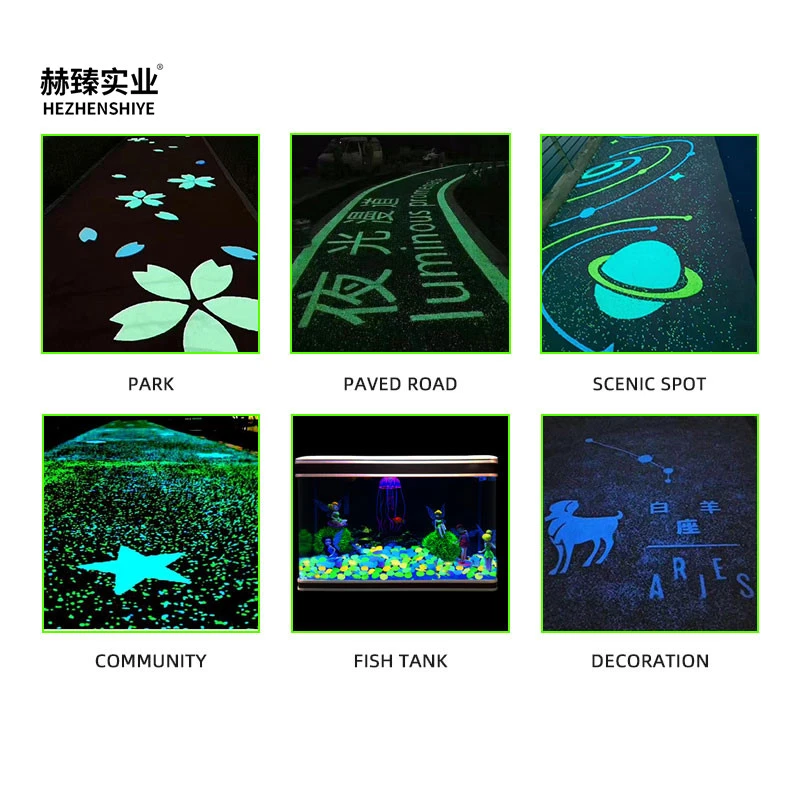Introducing our captivating glowing stone, a unique and mesmerizing addition to any space. These stones are designed to absorb light during the day and emit a soft, soothing glow at night, creating a magical atmosphere in both indoor and outdoor settings. Made from high-quality, eco-friendly materials, the glowing stone is non-toxic and durable, ensuring long-lasting performance. Whether used for garden decoration, pathways, or in creative DIY projects, these stones add an ethereal touch to your environment. The glowing effect is natural and does not require electricity, making them both energy-efficient and environmentally friendly. Available in various shapes and sizes, they are perfect for creating intricate patterns or simply scattered for a subtle, ambient glow. The glow intensity is influenced by the amount of light they absorb, ensuring a bright and beautiful shine in the dark. Ideal for garden paths, outdoor spaces, or even as decorative pieces inside your home, these stones bring both beauty and functionality, making them an excellent choice for anyone looking to add a touch of magic to their decor. Whether you're enhancing the tranquility of your outdoor garden or adding a unique decorative element indoors, the glowing stone will transform your space with its enchanting luminescence.
Glowing Stone Advantages
-
1.Beautiful decoration+READ MORECeramic luminous stone can emit bright light at night, and continue to emit light for a long time, adding unique visual effects and beauty to the environment.
-
2.Safety warning+READ MOREIn the absence of light environment, the luminous characteristics of luminous stone can play an obvious warning role, improve the safety of night walking.
-
3.Strong durability+READ MORECeramic luminous stone with corrosion resistance, water resistance, sun resistance and other advantages, long service life, can maintain a long-term stable luminous effect.
-
4.Environmental protection and energy saving+READ MORELuminous stone by absorbing light energy and storage, in the absence of light under the condition of the release of light radiation, no additional power support, in line with the concept of green energy saving.
-
5.Widely used+READ MORECeramic luminous stone can be used in roads, flower beds, swimming pools and interior decoration walls and other occasions, with broad application prospects.
How Glowing Stones Enhance Garden Landscaping: A Magical Touch for Outdoor Spaces
Glowing stones are a transformative addition to garden landscaping, bringing a magical touch to outdoor spaces that can be appreciated both day and night. These unique stones absorb sunlight during the day and emit a gentle, ethereal glow after dark, creating a captivating ambiance that adds charm and functionality to gardens.
One of the primary benefits of glowing stones is their ability to enhance garden pathways. Placing them along walkways provides not only visual appeal but also improves safety, as they light up the path in a soft, non-invasive manner. They eliminate the need for electricity-powered lights, offering an eco-friendly and cost-effective solution for garden illumination.
Glowing stones are also ideal for highlighting specific features in your garden, such as water fountains, flower beds, or sculptures. By strategically placing them around focal points, you can create a serene, almost otherworldly atmosphere that draws attention to the beauty of your landscape. The glow intensifies in the dark, adding a unique layer of interest that changes the entire feel of the space.
For those with larger gardens or outdoor spaces, glowing stones are perfect for creating intricate designs. They can be arranged in patterns or borders, accentuating the contours of the garden and giving it a whimsical, enchanted look. These stones work exceptionally well in modern garden designs, where minimalist styles benefit from the subtle yet stunning lighting effects.
The Science Behind Glowing Stones: How They Absorb and Emit Light Naturally
Glowing stones, also known as photoluminescent stones, are fascinating natural wonders that can add a magical touch to any garden or outdoor space. But have you ever wondered how these stones absorb and emit light without needing any external power source? The science behind glowing stones lies in the principles of photoluminescence—a process in which a material absorbs energy from light and re-emits it as a glow.
During the day, glowing stones absorb light from the sun or any other bright light source. The stones are typically made from materials like strontium aluminate or zinc sulfide, which have the unique ability to trap light energy within their structure. When these materials are exposed to light, the energy excites the electrons in the atoms of the stone, causing them to jump to higher energy levels.
Once the light source is removed, the energy stored in the stone is gradually released as visible light, which is what causes the glow. This process is known as phosphorescence, and it can continue for several hours after the light source has disappeared. The intensity and duration of the glow depend on the quality of the material and the amount of light it has absorbed. High-quality glowing stones, for example, can glow brightly for up to 12 hours, offering a long-lasting visual effect.
The glow produced by these stones is typically a soft, calming light, making them ideal for creating ambient lighting in outdoor gardens, walkways, and even indoor decor. The ability of glowing stones to harness and re-release natural light energy makes them an eco-friendly, cost-effective, and sustainable lighting option for any space.
-
01
-
02
-
03





 Banner PDF
Banner PDF Get A Quote
Get A Quote







